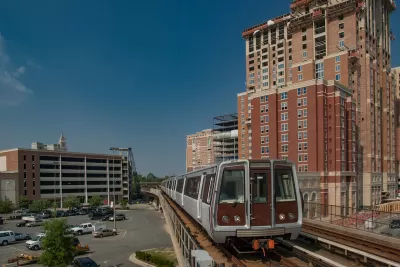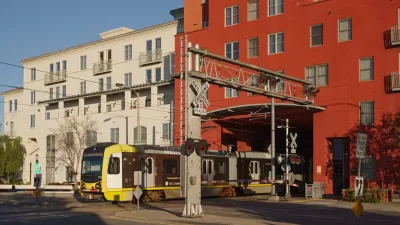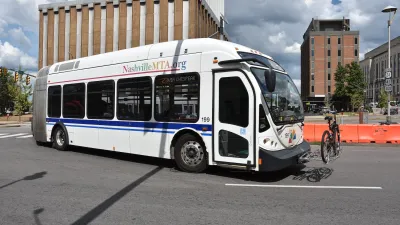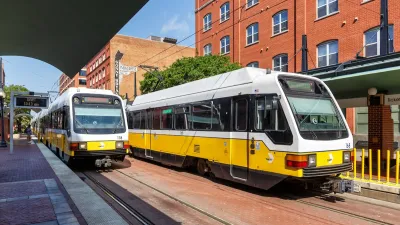Tying housing and land acquisition funding to transit projects could make dense, walkable development easier and more cost-effective.

Federal funding for transit-oriented development (TOD) is often siloed into its separate transportation and housing elements, making it more difficult to build developments that ostensibly combine transportation and housing to create more walkable and affordable communities.
As Kalena Thomhave explains in Smart Cities Dive, this is a problem because transit agencies often don’t own enough land to make development near stations possible. An analysis from the Urban Institute found that “housing is much more likely to be built far from transit, where land and housing costs are lower. Between 2000 and 2019, more than eight times as many housing units were built far from transit than nearby, according to the analysis.”
Cities can promote the integration of housing and transportation by creating a “dedicated land acquisition program” that would be tasked with identifying land acquisition opportunities near transit stations and tie funding for housing programs to transportation projects. In Seattle, Sound Transit has completed several TOD projects that pair new housing with light rail lines.
FULL STORY: How to ease the path to transit-oriented housing development

Alabama: Trump Terminates Settlements for Black Communities Harmed By Raw Sewage
Trump deemed the landmark civil rights agreement “illegal DEI and environmental justice policy.”

Planetizen Federal Action Tracker
A weekly monitor of how Trump’s orders and actions are impacting planners and planning in America.

The 120 Year Old Tiny Home Villages That Sheltered San Francisco’s Earthquake Refugees
More than a century ago, San Francisco mobilized to house thousands of residents displaced by the 1906 earthquake. Could their strategy offer a model for the present?

In Both Crashes and Crime, Public Transportation is Far Safer than Driving
Contrary to popular assumptions, public transportation has far lower crash and crime rates than automobile travel. For safer communities, improve and encourage transit travel.

Report: Zoning Reforms Should Complement Nashville’s Ambitious Transit Plan
Without reform, restrictive zoning codes will limit the impact of the city’s planned transit expansion and could exclude some of the residents who depend on transit the most.

Judge Orders Release of Frozen IRA, IIJA Funding
The decision is a victory for environmental groups who charged that freezing funds for critical infrastructure and disaster response programs caused “real and irreparable harm” to communities.
Urban Design for Planners 1: Software Tools
This six-course series explores essential urban design concepts using open source software and equips planners with the tools they need to participate fully in the urban design process.
Planning for Universal Design
Learn the tools for implementing Universal Design in planning regulations.
Clanton & Associates, Inc.
Jessamine County Fiscal Court
Institute for Housing and Urban Development Studies (IHS)
City of Grandview
Harvard GSD Executive Education
Toledo-Lucas County Plan Commissions
Salt Lake City
NYU Wagner Graduate School of Public Service





























